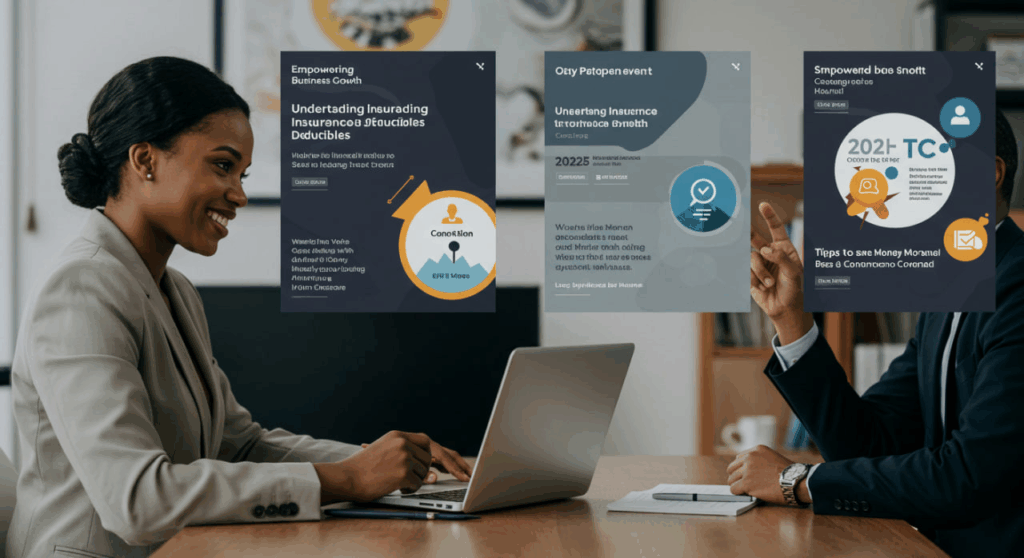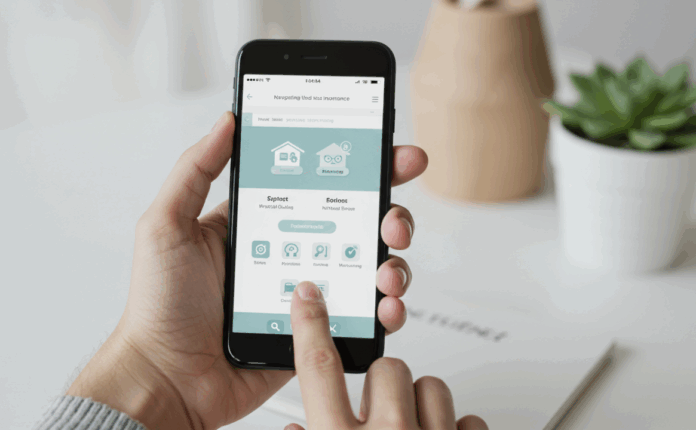The insurance landscape is evolving rapidly in 2025, driven by technological advancements, shifting consumer expectations, and economic pressures. As premiums rise due to inflation, natural disasters, and increasing cyber risks, policyholders are seeking ways to secure robust coverage without breaking the bank. This article dives into the key trends shaping the insurance market this year and offers actionable tips to help you save money on your coverage. Whether you’re insuring your home, car, or health, these insights will empower you to make informed decisions and optimize your insurance experience.
Understanding the 2025 Insurance Market
The insurance industry is undergoing a transformation, fueled by digital innovation and a focus on customer-centricity. According to industry reports, rising claims costs and economic volatility are pushing premiums upward, particularly in property and casualty (P&C) insurance. At the same time, insurers are leveraging artificial intelligence (AI), telematics, and data analytics to offer personalized policies and streamline processes. These changes present both challenges and opportunities for consumers looking to balance cost and coverage. By staying informed about these trends, you can navigate the market more effectively and uncover savings.
The Rise of Personalization in Insurance
Personalization is a cornerstone of the 2025 insurance market. Insurers are using AI and data analytics to tailor policies to individual needs, moving away from one-size-fits-all models. For example, usage-based insurance (UBI) programs, which adjust premiums based on real-time data like driving habits or health metrics, are gaining traction. This trend allows policyholders to pay for coverage that aligns with their lifestyle, potentially lowering costs for those who demonstrate low-risk behaviors. Companies like Smile are leading the charge with app-based programs that reward safe driving or healthy habits with discounts and loyalty points.
Digital Transformation and Customer Experience
The shift toward digital platforms is reshaping how consumers interact with insurers. In 2025, seamless omnichannel experiences—spanning mobile apps, websites, and call centers—are becoming the norm. A J.D. Power survey highlights that 50% of customers use email to contact their insurer, while 30% rely on websites or apps. However, over 30% of customers remain dissatisfied with current digital options, signaling room for improvement. Insurers are investing in user-friendly interfaces, AI chatbots, and self-service portals to enhance convenience, which can indirectly help you save by reducing administrative costs passed on to policyholders.
Climate Change and Rising Premiums
Climate change is a significant driver of insurance costs in 2025, particularly for homeowners and auto insurance. Severe weather events, such as hurricanes and wildfires, have led to a 50% increase in property reinsurance rates in some regions. This has prompted some insurers to exit high-risk markets or raise premiums. However, innovative products like green insurance, which supports eco-friendly initiatives, are emerging as a way to mitigate costs while addressing environmental concerns. Understanding these dynamics can help you choose policies that balance risk and affordability.
Cybersecurity Insurance Demand
As cyber threats grow more sophisticated, demand for cybersecurity insurance is surging. Insurers are developing specialized coverage for data breaches and cyberattacks, which is critical for both businesses and individuals. In 2025, integrating cybersecurity coverage into your insurance portfolio can protect your financial assets, but it’s essential to shop around for cost-effective options. Insurers are also using AI to assess cyber risks, which can lead to more competitive pricing for low-risk policyholders.
Tips to Save Money on Insurance Coverage in 2025
With premiums on the rise, finding ways to save on insurance is more important than ever. The following strategies leverage current market trends to help you reduce costs without sacrificing coverage quality.
Compare Quotes Across Multiple Providers
One of the most effective ways to save is by shopping around. The insurance market is highly competitive, and consumers are increasingly moving away from bundling home and auto policies with a single provider. A 2023 J.D. Power survey found that only 66% of customers with new home insurance policies chose to bundle, down from 76% in 2022. Use comparison platforms like Compare the Market or Direct Line to evaluate quotes from multiple insurers. Look for providers offering discounts for safe driving, low mileage, or eco-friendly homes.
Leverage Usage-Based Insurance (UBI)
Usage-based insurance is a game-changer for cost-conscious consumers. By installing telematics devices or apps that monitor driving habits, you can qualify for lower auto insurance premiums. For example, programs like Nationwide’s SmartRide reward safe drivers with discounts of up to 40%. Similarly, health insurers are offering incentives for policyholders who track fitness metrics through wearables. Check with your insurer to see if UBI options are available and how they can reduce your rates.
Bundle Policies Strategically
While bundling isn’t as common as it once was, it can still offer savings when done strategically. Combining home and auto insurance with the same provider often results in a multi-policy discount of 10-20%. However, weigh the savings against the coverage quality. If bundling limits your options or results in inadequate coverage, it may be worth paying slightly more for separate policies that better meet your needs.
Optimize Your Deductibles

Increasing your deductible—the amount you pay out of pocket before insurance kicks in—can significantly lower your premiums. For example, raising your home insurance deductible from $500 to $1,000 could reduce your annual premium by 15-25%. However, ensure you have enough savings to cover the higher deductible in case of a claim. This strategy works best for low-risk policyholders who rarely file claims.
Take Advantage of Loyalty and Reward Programs
Many insurers are introducing loyalty programs to retain customers in a competitive market. For instance, Smile’s app-based rewards scheme offers points for safe driving or engaging with ecosystem partners, which can be redeemed for premium discounts. Before committing to a policy, ask about loyalty incentives or rewards for long-term customers, as these can lead to significant savings over time.
Invest in Risk Mitigation
Reducing your risk profile can lower your premiums. For homeowners, installing security systems, storm shutters, or energy-efficient upgrades can qualify you for discounts. For auto insurance, completing a defensive driving course or maintaining a clean driving record can reduce rates. Insurers increasingly use AI to assess risk, so proactive steps to minimize claims can translate into lower costs.
How Technology is Shaping Affordable Coverage
Technology is at the heart of the 2025 insurance market, offering new ways to save. AI-driven pricing models allow insurers to offer competitive rates based on precise risk assessments. Geospatial intelligence is shifting the focus from reactive claims handling to proactive risk management, potentially lowering premiums for policyholders in less risky areas. Additionally, low-to-no ETL (extract, transform, load) solutions are streamlining data processes, reducing operational costs that insurers can pass on as savings. By choosing tech-savvy insurers, you can benefit from these efficiencies.
The Role of AI in Cost Savings
AI is revolutionizing insurance by automating claims processing, detecting fraud, and personalizing policies. For consumers, this means faster claims resolution and potentially lower premiums due to reduced overhead. Insurers like Smile and Nationwide are using AI to offer tailored discounts, making it easier for policyholders to save. When selecting an insurer, prioritize those investing in AI to ensure you’re getting the most cost-effective coverage.
Mobile Apps and Self-Service Portals
Mobile apps and online portals are making it easier to manage policies and file claims, reducing administrative costs. Insurers like Markel offer robust digital platforms for accessing policy documents, making payments, and updating preferences. These tools not only enhance convenience but also allow you to monitor your coverage and identify savings opportunities, such as discounts for paperless billing or automatic payments.
FAQs
How can I ensure I’m getting the best insurance deal in 2025?
To get the best deal, compare quotes from multiple providers using comparison platforms, leverage usage-based insurance programs, and ask about loyalty rewards or discounts for risk mitigation measures like security systems or defensive driving courses.
What is usage-based insurance, and how does it save money?
Usage-based insurance (UBI) adjusts premiums based on real-time data, such as driving habits or health metrics. By demonstrating low-risk behaviors, like safe driving or regular exercise, you can qualify for discounts, potentially saving 10-40% on premiums.
Are there new types of insurance I should consider in 2025?
Yes, cybersecurity insurance is increasingly important due to rising cyber threats. Additionally, green insurance products that support eco-friendly initiatives are gaining popularity and may offer cost savings for environmentally conscious consumers.
How does climate change affect my insurance costs?
Climate change is driving up premiums, especially for home and auto insurance, due to increased risks from natural disasters. To save, consider insurers offering green policies or discounts for homes with storm-resistant features.
Can technology help me save on insurance?
Absolutely. Insurers using AI, telematics, and digital platforms can offer personalized policies, faster claims processing, and lower overhead costs, which translate into savings for policyholders. Look for tech-savvy insurers to maximize value.




3cnk17
hzt1i5
wtc78t
3lnd2m